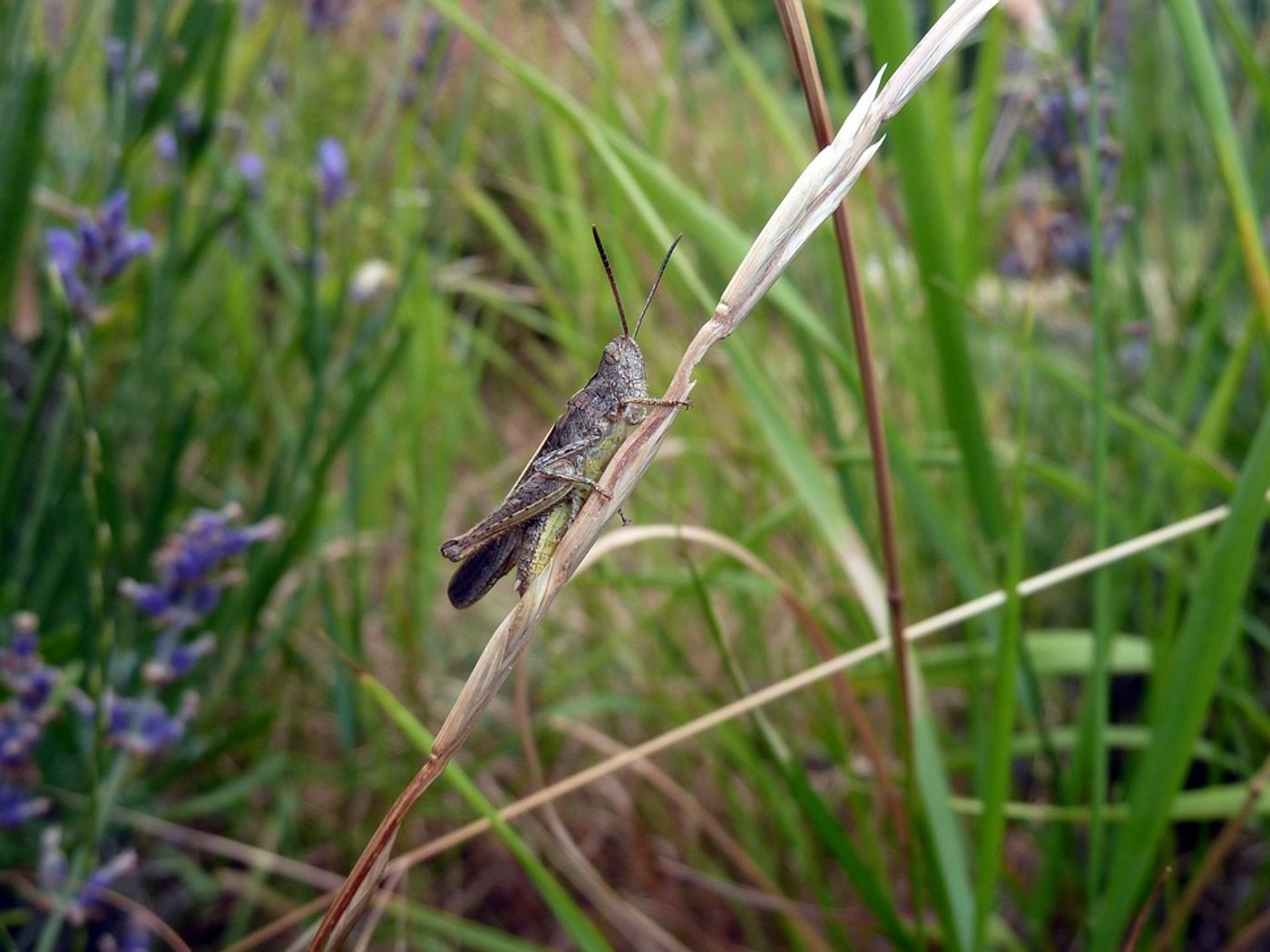Grasshopper declines signal failing praries
Grasslands cover over 30% of Earth's landmass and account for the majority of cropland globally. Yet, new research published in the Proceedings of the National Academy of Sciences (USA) suggests that grasslands aren’t doing so hot, a fact that poses a significant threat to the global human food supply. How do we know? Because grasshoppers are on the decline.
The study entitled "Nutrient dilution and climate cycles underlie declines in a dominant herbivore" reports that in the last twenty years, grasshopper populations have declined over 30% in Konza Prairie, a protected tallgrass prairie reserve in northeast Kansas. And grasshoppers aren’t alone. Past studies have shown that other insect groups are also on the decline.
So, the question is, why is this happening? Lead research Ellen Welti, of the Geographical Ecology Group in the Department of Biology at the University of Oklahoma, explains that there just aren’t enough nutrients in the plants that these insects eat anymore. She says that the findings from this study suggest that the dilution of nutrients like nitrogen, phosphorus, and sodium in the plants is caused by increasing levels of atmospheric CO2. In other words, another fun side effect of climate change, yay!
"This decline in plant nutrient concentration poses a challenge for all animals that consume plants, including humans," Welti said.
The Konza Prairie is nothing if not prime habitat for grasshoppers, which is why Welti and her colleagues used it to collect data on the insects for almost 30 years under the National Science Foundation's LTER (Long Term Ecological Research) program. "One surprise was that grasshopper abundances in this large native tallgrass prairie reserve are declining," Welti said. "This grassland appears to be a stable and prime habitat for grasshoppers and yet even here, we are seeing 2% annual declines."
The length of the study allowed Welti to understand key patterns in grasshopper abundance as they relate to climate oscillations. From these patterns, Welti and fellow researchers were able to understand that despite a significant (twofold) rise in plant growth, plant quality is declining, which is impacting insect populations.
"The greenhouse gas CO2 is heating the Earth and acidifying its oceans, but it is also the main ingredient in the sugars, starches, and cellulose of plants," said senior author Michael Kaspari. "When we pump the atmosphere full of CO2, we build more plants. But, with no additional nutrients to fertilize them, the nutritional value of each bite is diluted. Mouthful by mouthful, the prairie provides less and less food to the grasshoppers. Hence, their decline."
This threat doesn’t only apply to grasshoppers; herbivores around the world are also at risk. "The mechanism of grasshopper declines that we propose in this study -- declining plant quality with increasing atmospheric CO2 -- is expected to be global in scope and pose the largest challenge to herbivores. It is notable that a large number of previous studies documenting insect declines were on another herbivorous group (butterflies and moths), but few of these papers identified a mechanism causing declines," concludes Welti.
Sources: PNAS, Science Daily, NSF










